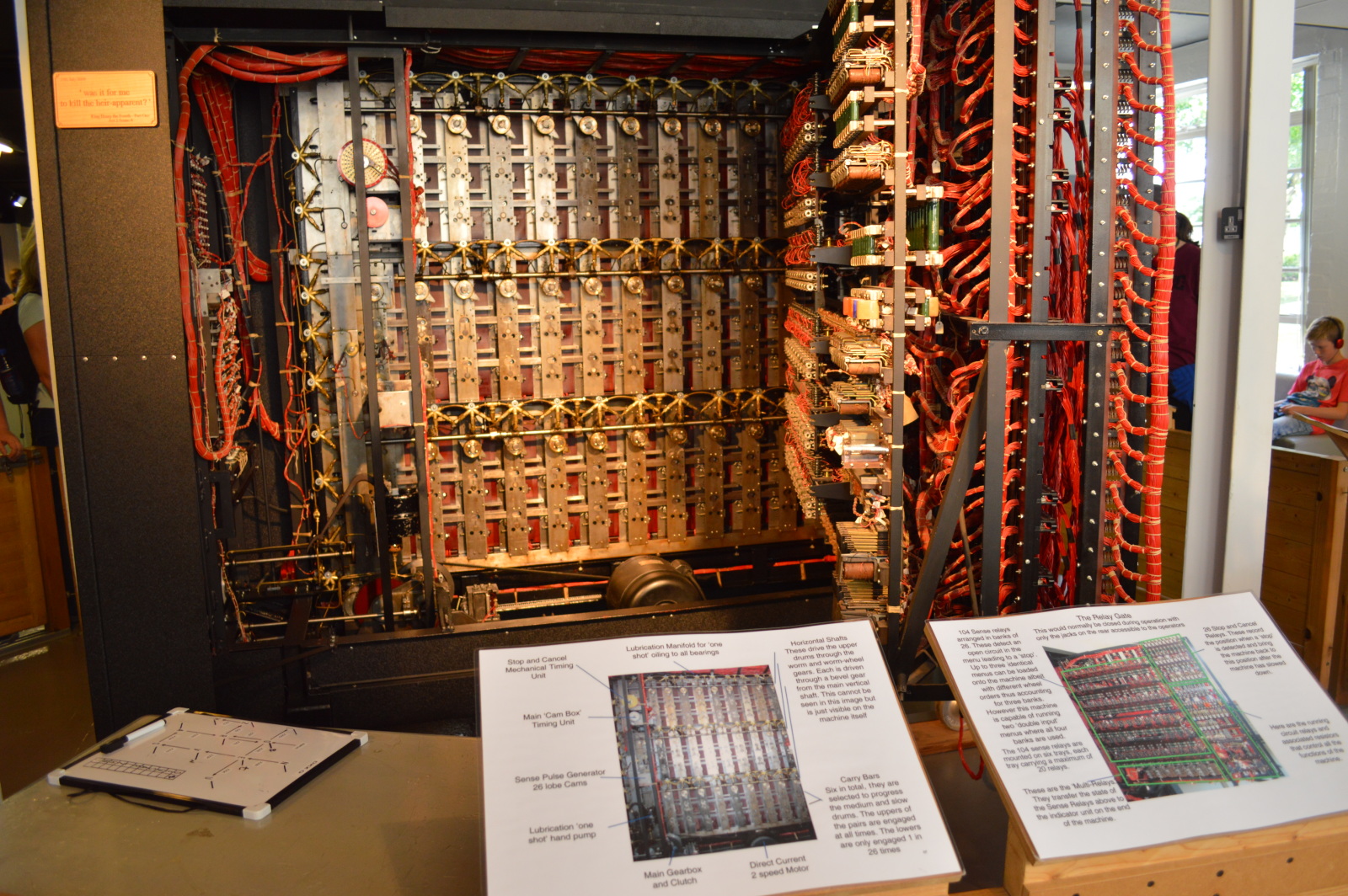Imitation Game and Bletchley Park
As a part of the Renaissance Foundation, a viewing of the critically acclaimed film The Imitation Game starring Benedict Cumberbatch followed by a visit to Bletchley Park was organised for our group by Sir John Knight, a great supporter of the group's from Stat Oil. The film was a fantastic introduction to the world of wartime Bletchley Park and gave us all a real insight into the remarkable work that took place there and the incredible breakthroughs the men and women made to ultimately help Britain to win the war. One particular 'behind-the-scenes hero' was Alan Turing, the man who invented the Bombe, a machine which enabled them to break the German codes, and therefore, he was the film's main focus. Prior to the film, Chairman of Bletchley Park Sir John Scarlett gave us a brief history about the place, right up to it's use in the war.
A few months after the film showing, we all went to Bletchley Park to see where all the action took place. We were extremely lucky to be given a tour by Dr. Joel Greenburg, who also told us the story of Bletchley Park along the way.
Since I last visited a few years back, Bletchley has been refurbished with new exhibitions open, such as the exclusive Imitation Game exhibition. As you enter, you walk into a mock 'train station', in order to give you the feeling of going off in wartime Britain to work at Bletchley as a codebreaker. In the train station area, as well as various artefacts and replicas, there was an introductory video, which was no more than around five or six minutes long and summed up the workings at Bletchley Park.
Next stop was one of the huts, which contained original artefacts of Alan Turing's works. This was so fascinating and felt unreal but it really gave us a flavor of how important the goings on here were and still are.
We next visited the main house, which is where the Imitation Game exhibition was. The exhibition contained the costumes and props that were worn and used in the film, as well as some of the sets, such as the bar. This was a really wonderful experience, as everything felt so authentic and made you feel not like you are in the film, but in 1940s Bletchley and that really is extraordinary.
After this, we went into the newly refurbished huts, which were set up as they would have been in the wartime, even with projections of people working as they would have been. Additionally, there were plenty of activities to have a go at, including a simulated Enigma Machine. Realistically, I and I am sure some of the others will agree, could have spent all day in those huts, just looking around and having a go on the activities. It was a lot of fun but also a great learning experience for all ages. The next stop from here was lunch where we all had a chance to have a sit down and discuss what we had learnt and how in awe we all were over what went on at Bletchley.
"Better get a head start on the blog..."
A talk was then given to us about the Enigma Machine and we were shown and got to use an original wartime machine. Learning how it all works and how many different code combinations there are was really special, as was getting to have a go with it.
Finally, we looked around the last exhibition, which contained many more artefacts associated with particular names in the world of Bletchley Park. There is a particular area dedicated to Alan Turing and the different kinds of Enigma machines as they have developed over the years.
Bletchley Park was a really wonderful experience. Everything we saw and learnt was truly engaging and it really gives the unsung heroes of the war a chance to tell their stories and be given credit for how they helped to win the war.
On behalf of everyone at the Renaissance Foundation, we would like to give our greatest thanks to Sir John Knight, Sir John Scarlett and Lady Scarlett and Dr. Joel Greenburg for all you have done in making this visit possible.








